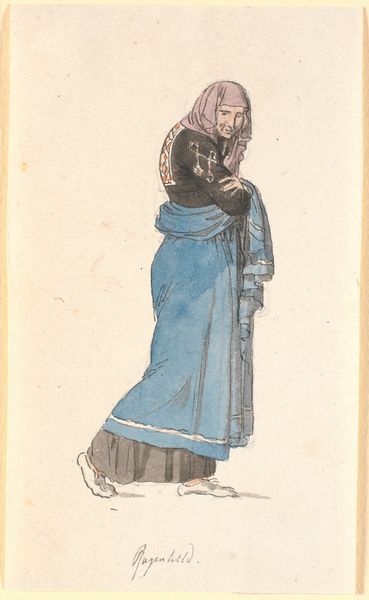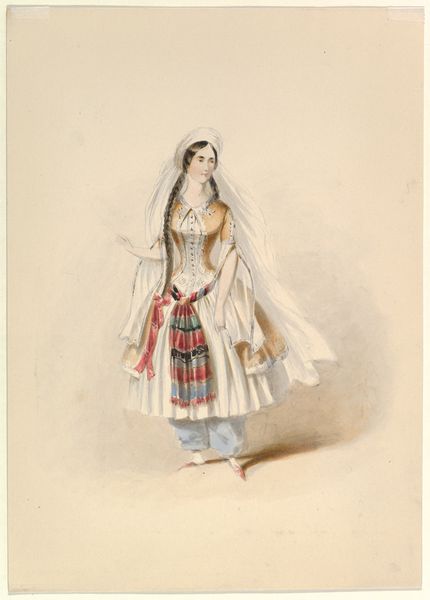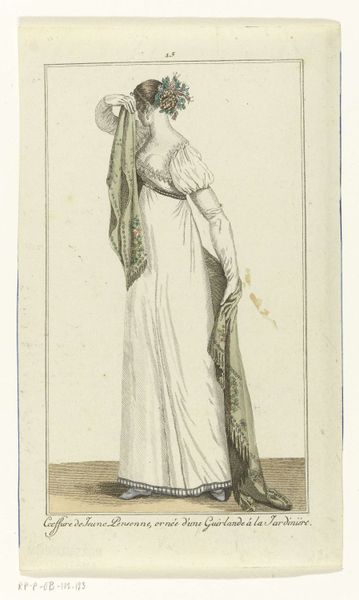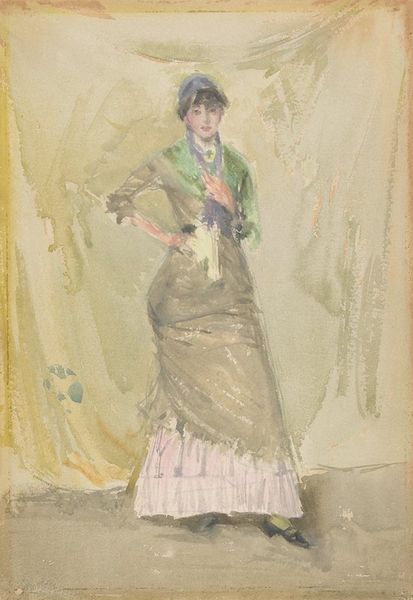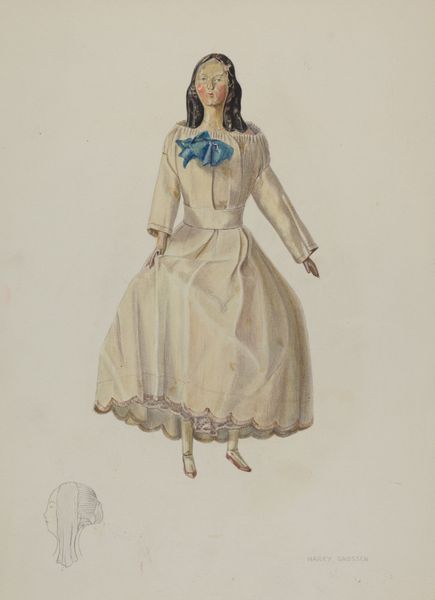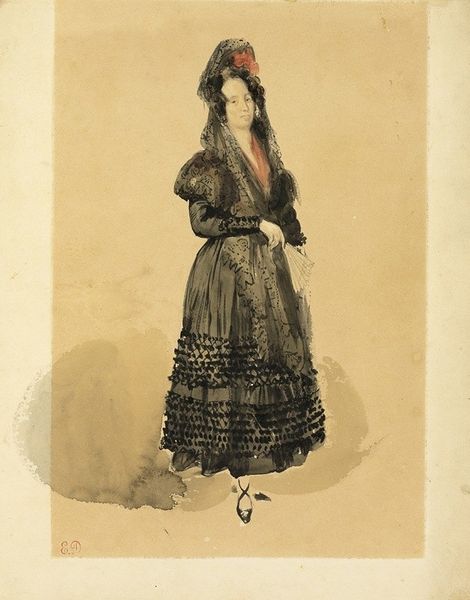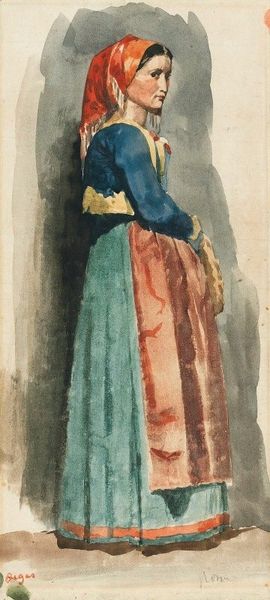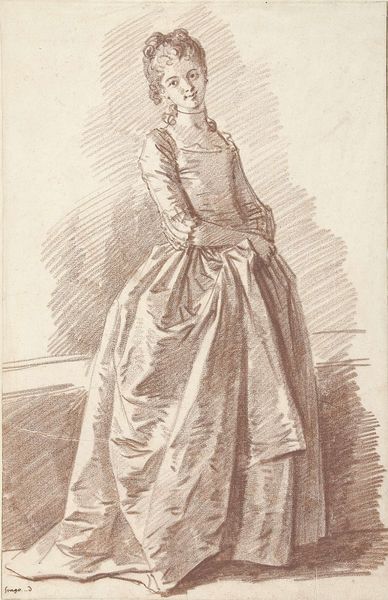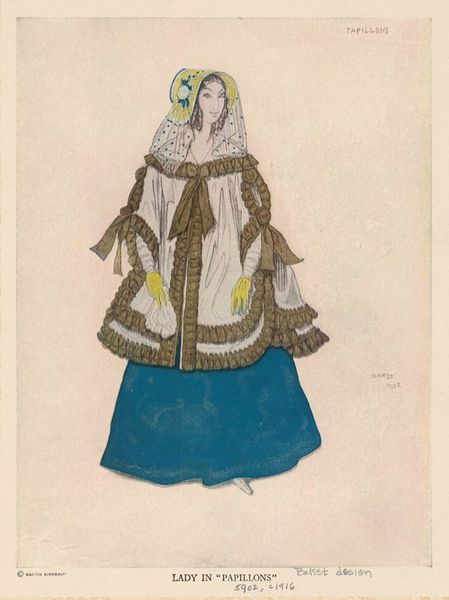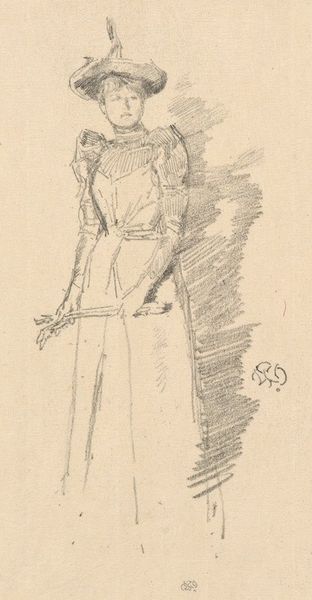
drawing, watercolor
#
portrait
#
drawing
#
figuration
#
oil painting
#
watercolor
#
orientalism
#
portrait drawing
#
watercolour illustration
#
academic-art
#
watercolor
#
realism
Copyright: Public Domain: Artvee
Curator: Here we have John Frederick Lewis' "A Jewish Woman of Gibraltar or Tangier", an undated drawing that captures a subject shrouded in both cultural identity and artistic interpretation. It whispers of untold stories, don't you think? Editor: The first thing I notice is the watercolor, thin and translucent on the paper, rendering the sitter’s garment with striking detail. You can almost feel the weight of the cloth in contrast to the paper's light surface. Curator: Yes, there’s a tangible tension, isn’t there? The way the light catches on the fabric is captivating. It speaks of a skilled hand intimately familiar with its craft. I imagine Lewis studying these textures, absorbing the very essence of the material. Editor: And perhaps fetishizing it in ways that are troubling, given the context. His orientalism romanticizes and essentializes the figure, doesn’t it? Curator: It's a dance on a precipice, no doubt. But I also see a reverence, a curiosity. It's like he's trying to unravel the mystery of her identity through her attire. The headpiece, the jewelry—they all carry such significance. Editor: Absolutely, but it's a constructed significance, mediated through the artist's own worldview and the cultural dynamics of 19th century colonialism. He profits, commodifies really, this "exotic" other for a European audience. Curator: A complex reading for sure. And one cannot overlook the economic context either: How might her clothing and jewels signify her class or status, beyond simple orientalist fantasies? Was it the best rendering technique that he knew to emphasize these cultural signifiers to his specific art market? Editor: Precisely, those techniques serve specific purposes. I'd be curious to trace how this image circulated and what kind of consumption it engendered at the time. That tells us a lot. Curator: Ultimately, for me, it comes back to the face. It may be averted, shadowed even, yet the soul of the subject pierces through the veneer of Orientalist tropes. What would she say, if we could hear her today? Editor: What she could produce, consume, own even. Yes, shifting the perspective and acknowledging the making, showing, and viewing relationships makes all the difference here. Curator: Food for thought, definitely! Editor: Indeed!
Comments
No comments
Be the first to comment and join the conversation on the ultimate creative platform.


